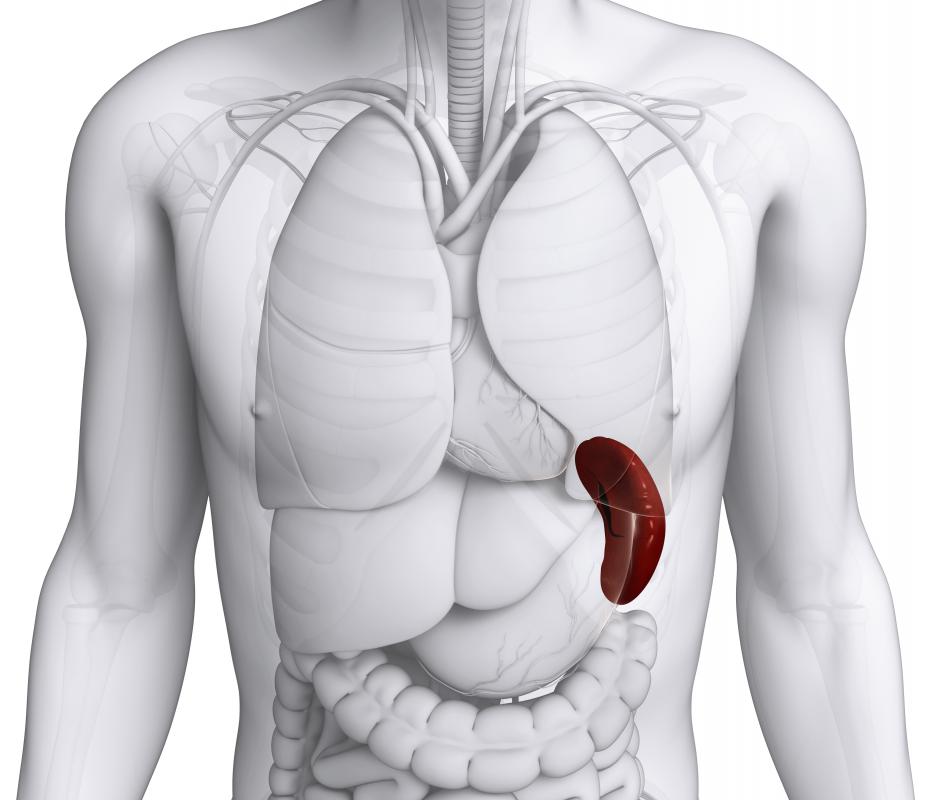At WiseGEEK, we're committed to delivering accurate, trustworthy information. Our expert-authored content is rigorously fact-checked and sourced from credible authorities. Discover how we uphold the highest standards in providing you with reliable knowledge.
What Is White Pulp?
White pulp constitutes portions of the human spleen and lymphatic system. It is comprised of lymphoid tissue, and it typically covers structures known as arterioles. The substance's main duty is producing and distributing disease-fighting particles.
Lymph nodes, the spleen and other organs contribute to the body’s disease-fighting lymphatic system. The spleen itself is a small organ that has two main responsibilities: boosting immune functions and cleansing and storing red blood cell supplies. The white pulp is a major component of the spleen, which is located in the upper left abdominal region.

Structurally, white pulp is found in every region of the spleen, particularly around blood vessels. It coexists and interweaves with red pulp. In contrast with white pulp, red pulp is responsible for treating red blood cells, and it consists of blood-filled networks. Conversely, a thick and tough connective tissue called adenoid tissue creates white pulp, and this tissue type is also found in the lymph nodes and the tonsils. Adenoid tissue is rich in white blood cells and other accessory cells that work to eliminate antigens, or harm-causing substances.

White pulp is part of the spleen's immune system responsibilities. The most prominent role that this pulp plays in the immune system is helping to create the lymphocyte white blood cells. These are the tiny substances produced by the body that combat harmful agents such as viruses and bacterial infections. The area between the arteries and the pulp, called the marginal zone, contains harmful substances from circulating bodily fluids and sends these substance to lymphocyte cells for destruction. In a sense, this area is the white pulp’s bounty hunter.

Composition of this type of pulp generally consists of two areas: periarteriolar lymphoid sheaths and lymphoid portions. The former area is what surrounds arteries. Specific attacker white blood cells known as T-cells form in this area, where they neutralize the invasive substances. The lymphoid areas, on the other hand, hold B-cells that create proteins known as antibodies, which also attack foreign particles. After infectious invaders are sent to the pulp, they are covered with antibodies that seek to disable and destroy them. The disabled organisms are then sent back into circulation via fluids such as lymph and blood.
Several conditions can affect the spleen and thus the white pulp. Injuries might cause the spleen to rupture. A spleen that is not performing its proper functions can also become swollen, causing symptoms such as pain and fatigue.
AS FEATURED ON:
AS FEATURED ON:
















Discuss this Article
Post your comments